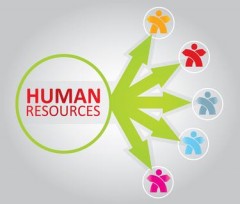 Innovation is more than a management buzzword and cool trend. Understood as the ability of a company (or a professional) to do things differently (either in a disruptive or continued manner) and thereby obtain better results is definitely one of the keys for an organizationto achieve its business objectives, differentiating clearly from the competition in the context of the 21st century organization.
Innovation is more than a management buzzword and cool trend. Understood as the ability of a company (or a professional) to do things differently (either in a disruptive or continued manner) and thereby obtain better results is definitely one of the keys for an organizationto achieve its business objectives, differentiating clearly from the competition in the context of the 21st century organization.
Fashions and trends aside, the key is not to innovate, but do it before others…
Nevertheless, even though it is undeniably crucial to drive innovation, few companies have embraced the development of a culture of innovation as a source of value creation for the business.
Indeed, although they are aware of the importance of fostering a culture of innovation for the business, many companies are deeply unaware of what level of innovation their culture offers.
If we accept the relevance of developing a culture of innovation in business terms, then it is not unreasonable to think that the first thing we should do in HR is to start measuring it.
If we do not know the true degree of innovation our culture has, then it’s difficult for us to develop it from within HR.
Beyond the benefits that reflect corporate presentations and manifestos of values, it will be difficult for us to rigorously promote a culture of innovation if we don’t start to measure it objectively.
Coming this far begs the next question. What parameters must be analyzed to determine the degree of innovation of an organizational culture?
9 essential dimensions
Although there are very valid models already developed for this, in my opinion there are at least nine mandatory dimensions we should use to build questions that (assuming objectivity and honesty in the responses…) enable us to identify the true degree of innovation of our organizational culture.
1. Openness to knowledge
The way a company opens up to knowledge is a crucial element for building a culture of innovation model.
Opening up processes to access knowledge and the extent to which professionals are allowed to distribute and connect it among themselves are insightful indicators on the innovative capacity of the organization. There is a directly correlation between the capacity to open up to knowledge and the degree of innovation in the culture.
2. Orientation to self-learning
The ability to foster a culture of innovation necessarily involves turning the conventional training and learning model upside down. In a hyper-dynamic organizational context, self-responsibility in terms of learning is a determining factor for building a culture of innovation. Organizations that facilitate self learning models are setting down the grounds for a culture of innovation.
3. Degree of connectivity
To assess the extent to which connectivity is promoted or limited provides key information for a factor that is clearly critical for determining to what extent a culture is innovative or not. How liberal are both the internal and external socialization processes? Are there business objectives related to building relationships? Or how easy is it to connect to other areas, projects or stakeholders? Such basic questions will shed light for this dimension.
4. Communication (Degree of freedom)
In fact this has nothing to do with the typical and over-popularized barometer predictable in any model measuring “climate”. Communication and the conversation ethos are inherent in a culture of innovation. This dimension should be developed to measure the degree of fluidity of communication, the frequency of conversations, the platforms on which this occurs, and the degree of freedom with which they develop and happen. Opening up conversations is a key mechanism to accelerate the processes of a culture of innovation themselves.
5. Level of intra-entrepreneurship
There is a close relationship between intra-entrepreneurship and orientation towards innovation in an organization. For that reason, this dimension is absolutely mandatory in any model for measuring innovative culture. The degree of intra-entrepreneurship reflects the ability of an organization to open up and deliver proactivity among their talent beyond the set structures, hierarchies and limits.
What is the degree of supervisory control over tasks and responsibilities? To what extent are there processes that cannibalize or, on the contrary, facilitate decision-making? To what extent does monitoring come close to facilitating or penalizing error? These are uncomfortable but necessary questions to reveal the extent to which the company is holding on to the watchdog paradigm and the autocratic management style. The capacity for innovation of an organization increases the further it is from the watchdog paradigm and the closer it is to a model of collaboration and cooperation.
7. Level of development of social technology
Based on the factors described so far, it is obvious that a culture will not be innovative only through high penetration of social technology (and usability logically). But it is also true that high levels of innovation can hardly be achieved in terms of culture, if social technology and the processes built around this do not permeate every corner of the organization.
Social technology does not guarantee a culture of innovation, but in the age of connectivity, it is hard to imagine a culture of innovation that does not capitalize on digitalizing their processes and knowledge flow.
8. Rigidity-flexibility of the organizational structure
Just as it came about with the dimension of social technology, organizational structure and its flexibility or rigidity do not guarantee the development of a culture of innovation. But in light of the above factors and relationships between them, it is logical to think that a flatter and less pyramidal organizational structure with looser and less canned descriptions of job-responsibilities should make it easier to strengthen many of the above factors and dimensions.
Consequently, measuring the degree of rigidity or flexibility that the organizational structure has is crucial to determine the suitability of the architecture for fostering a culture of innovation.
9. Transformational Leadership
As to be expected, to assess the degree of innovation in the corporate culture inevitably requires another specific dimension that measures the degree of transgression and disruption of the dominant leadership style in the organization. The way in which leaders and line managers lead, their emotions, their capacity to create collaborative environments and conversation spaces, their capacity to drive change from and through change, and even bring more change—these are items that are absolutely critical for evaluating the level of transformation of the leadership style simply because in the 21st century world of business, leadership is about stimulating cultures of innovation.
HR professionals should understand that promoting and developing a culture of innovation is a key factor to creating value in the organization.
Perhaps it is time to understand that besides the required indicators for organizational engagement, it is becoming indispensable to measure the degree of innovation in the organizational culture, as survival in the market is increasingly subject to the development of models for cultures of innovation. Without innovative behaviours, the risk of business obsolescence is higher.
Measuring the culture of innovation is something too serious to be trivialized, as it has often occurred with assessing organization engagement.
HR again has an opportunity, but also the responsibility to take leadership of a process that undoubtedly will be one of the keys to generating value in the 21st century company: measuring the culture of innovation and nurturing it.
This post was originally written for Meta4 Glocal Thinking Blog









